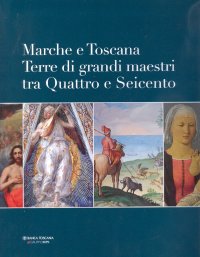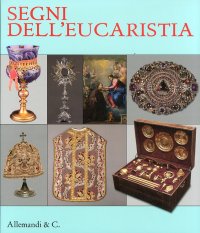Beato Angelico
Firenze, Palazzo Strozzi, September 26, 2025 - January 25, 2026.
Edited by Carl Brandon Strehlke.
Testi di Stefano Casciu, Marco Mozzo, Angelo Tartuferi.
Venezia, 2025; bound, pp. 456, 300 col. ill., cm 24x29.
cover price: € 80.00
|
Books included in the offer:
Beato Angelico
Firenze, Palazzo Strozzi, September 26, 2025 - January 25, 2026.
Edited by Carl Brandon Strehlke.
Testi di Stefano Casciu, Marco Mozzo, Angelo Tartuferi.
Venezia, 2025; bound, pp. 456, 300 col. ill., cm 24x29.
FREE (cover price: € 80.00)
Marche e Toscana. Terre di grandi maestri tra Quattro e Seicento
Ospedaletto, 2007; bound, pp. 320, col. ill., col. plates, cm 25,5x29.
FREE (cover price: € 77.00)
Segni dell'Eucarestia
Edited by M. Luisa Polichetti.
Ancona, Osimo, Loreto Jesi, Senigallia, Fabriano e Metelica, 23 giugno - 31 ottobre 2011.
Torino, 2011; paperback, pp. 221, b/w and col. ill., cm 24x28.
FREE (cover price: € 32.00)
Parthica. Incontri di culture nel mondo antico. 10. 2008. [Edizione rilegata]
Fabrizio Serra Editore
Pisa, 2008; bound, pp. 160, b/w ill., 4 col. plates, cm 21x29,5.
(Parthica. rivista diretta da Antonio Invernizzi. 10).
series: Parthica. 0010.
Other editions available: ISSN 1128-6342.
Subject: Essays (Art or Architecture)
Languages: 
Weight: 0.89 kg
In the Orient, Hellenistic culture and society came face to face with Achaemenid culture, but also with traditions that had maintained much of their individuality under the rule of the Great King. Throughout the long centuries of the Parthican empire, which stretched from the borders of Syria far into Central Asia, the coexistence of Greco-Roman traditions with the Semitic Syro-Mesopotamian heritage and with traditions that had come down from Iranian culture was characterized by a fertile exchange of ideas and freedom of cultural expression rarely attained in other periods and regions of antiquity.
Parthica aims to focus on the encounters that took place during that time, in order to explore the enduring testimony of a greatness for which historical research and archeology are offering a growing body of evidence and to seek its underlying meaning. Naturally, however, such an approach will not disregard either the solid premises achieved through the coexistence and mutual knowledge that originated under the Achaemenids, or the consequences, visible beneath the rathler rigidly controlled forms of the court of the Sasanids, or even the related phenomena that took place in nearby regions.
The Journal has been named after the Parthians, since their empire lay at the centre of an area characterized by a fundamental unity, both geographic and temporal, despite the multiplicity of its cultural components and the variety of specific historical phenomena. For there can be no doubt that its incomparable wealth of relations constituted one of the major features of the Parthian world, and represents an element of profound intellectual interest for scholars today.











